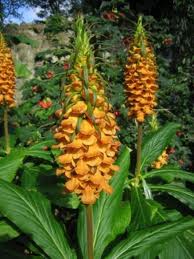Tilia
These deciduous trees are natives from North America to Mexico, Europe, some central portions of Asia, and Japan. These trees are commonly known as Basswoods, Limes or Lindens. These handsome plants provide good shade and some varieties are excellent for growing along streets. Bees are highly attracted to the extremely fragrant, minute flowers and produce a delicious Basswood honey. However, do not grow T. tomentosa and its varieties if you keep bees, as the flowers of these trees are poisonous to them. T. platyphyllos shouldn't be grown where its branches will hang over patios, parked cars, etc. because aphids, which feed on tree, drop sticky honeydew. T. americana (American Linden or Basswood) is a quick-growing tree that eventually reaches a height ranging from 60 to 80 feet. It has widely ovate, coarsely toothed leaves that can grow up to a foot in length. This tree cannot survive the polluted air of cities. The wood of this variety is light, soft, close-grained, fairly strong and quite tough. T. cordata (Little-leaved Linden), unlike T. americana, is suitable for growing in cities. This tree grows from 50 to 70 feet high. It has heart-shaped, leathery leaves that grow 2 or 3 inches long. They are shiny dark green above and light green below. It produces clusters of sweetly scented, creamy colored flowers in late summer. T. tomentosa (Silver Linden) is an attractive tree covered with rounded leaves that are dark green above and covered with silvery fuzz beneath. They are especially pretty when shifted by the breeze. Remember that the flowers of this tree, along with those of its varieties, are toxic to bees.
Pot Cultivation
These trees should be grown in moist, but well-drained, fertile soil that is slightly acidic to slightly alkaline and deep enough to accommodate the trees long root structure. They should be mulched and watered deeply during times of drought. They will grow in full sun or light shade. Little pruning is required.
Propagation
Linden trees may be increased by seeds, grafting or layering. Seeds can be sown, as soon as they are ripe, in light, well-drained soil. Grafting is usually done to increase named varieties that don't come true from seed.
 |
 |
T. Harold Hillier |
T. Oliveri |
VARIETIES
- T. europaea (European Linden) & var. Pallida (Kaiser Linden), Wratislaviensis (Warsaw Linden);
- T. Harold Hillier;
- T. platyphyllos & var. rubra, laciniata, asplenifolia, aurea, pyramidalis, Prince's Street, vitifolia, tortuosa, asplenifolia;
- T. cordata (Little-leaf Linden) & var. Greenspire;
- T. euchlora (Crimean Linden);
- T. petiolaris (Weeping White Linden);
- T. tomentosa (White or Silver Linden) & var. Brabant, Chelsea Sentinel, Petiolaris;
- T. moltkei;
- T. americana (American Linden) & var. dentata, macrophylla;
- T. heterophylla;
- T. monticola;
- T. neglecta;
- T. Henryana;
- T. Oliveri;
- T. mandschurica;
- T. japonica;
- T. Maximovicziana;
- T. Miqueliana;
- T. mongolica (Mongolian Linden);
- T. Tuan;
- T. insularis;
- T. intonsa.






